DISTINGUISHING BETWEEN LATHES AND MILLING MACHINES: KEY DIFFERENCES YOU NEED TO KNOW
In precision machining, lathes and milling machines are two of the most commonly used machine tools, each with distinct working principles and applications. Understanding the differences between them helps users select the right equipment for their manufacturing needs, optimize machining efficiency, and reduce costs.
This article will provide a detailed comparison of lathes and milling machines, covering their working principles, structures, applications, and how to choose the appropriate machine for your needs.
- What is a Lathe Machine?
1.1. Definition of a Lathe
A lathe is a type of machining tool that operates on the principle of rotating a workpiece around a fixed axis while a cutting tool remains stationary or moves in a controlled manner to shape the material. Lathes are commonly used to machine cylindrical components such as shafts, pipes, threads, and grooves.

1.2. Basic Structure of a Lathe
A standard lathe consists of the following main components:
• Headstock: Contains the main motor and spindle, which holds and rotates the workpiece.
• Tailstock: Supports the workpiece when machining long parts.
• Carriage: Holds and moves the cutting tool along different directions.
• Gearbox: Adjusts the spindle speed.
• Bed: The base structure that supports the entire lathe.
1.3. Types of Lathes
Lathes come in various types, including:
• Engine lathe (manual lathe): The most common type, capable of performing various turning operations.
• CNC lathe: Computer-controlled for higher precision and automation.
• Vertical lathe: Features a vertically oriented spindle, ideal for machining large-diameter parts.
• Special-purpose lathe: Designed for specific turning operations such as thread cutting or gear turning.
1.4. Applications of Lathes
Lathes are widely used in industries such as:
• Manufacturing and machining: Producing shafts, bearings, gears, and threaded parts.
• Automotive industry: Machining crankshafts, camshafts, and other rotational parts.
• Aerospace industry: Producing precision engine components.
• Metalworking: Machining aluminum, steel, copper, titanium, and other alloys.
- What is a Milling Machine?
2.1. Definition of a Milling Machine
A milling machine is a machining tool that operates based on the principle of a rotating cutting tool, while the workpiece remains stationary or moves along the X, Y, and Z axes to achieve the desired shape. Milling machines can create flat surfaces, slots, holes, and complex geometries.

2.2. Basic Structure of a Milling Machine
A standard milling machine consists of:
• Spindle: Holds and rotates the cutting tool at high speeds.
• Table: Supports the workpiece and moves in multiple directions.
• Tool head: Holds the milling cutter and can be adjusted for different cutting angles.
• Main motor: Powers the spindle rotation.
• Control system: In CNC milling machines, this system enables programming and automated machining.
2.3. Types of Milling Machines
There are various types of milling machines, including:
• Horizontal milling machine: The spindle is horizontally oriented, suitable for machining slots and long surfaces.
• Vertical milling machine: The spindle is vertically oriented, commonly used for drilling and surface milling.
• Universal milling machine: Capable of both horizontal and vertical milling.
• CNC milling machine: Computer-controlled for high precision and automation.
2.4. Applications of Milling Machines
Milling machines are extensively used in:
• Mold and die manufacturing.
• Precision machining of mechanical components.
• Production of machine parts, medical equipment, and electronic components.
- Comparison Between Lathes and Milling Machines
| Criteria | Lathe Machine | Milling Machine |
| Working Principle | The workpiece rotates while the cutting tool remains stationary or moves | The cutting tool rotates while the workpiece remains stationary or moves |
| Main Machining Function | Machining cylindrical or rotational parts | Machining flat surfaces, slots, holes, and complex shapes |
| Key Components | Headstock, tailstock, bed, carriage | Spindle, table, tool head |
| Precision Level | High, but depends on the workpiece’s rotational speed | Higher precision, especially with CNC milling machines |
| Applications | Turning operations for shafts, bearings, threads, gears | Milling operations for molds, complex geometries, and precision components |

- Should You Choose a Lathe or a Milling Machine?
Choosing between a lathe and a milling machine depends on your machining requirements:
• If you need to machine cylindrical or rotational parts, a lathe is the better choice.
• If you need to create flat surfaces, slots, holes, or complex geometries, a milling machine is more suitable.
• For high-precision and mass production, investing in CNC machines is recommended over traditional manual machines.
- Conclusion
Both lathes and milling machines play essential roles in the machining industry, but they have different working principles and applications. Understanding these differences enables manufacturers and machinists to select the right machine for their needs.
If you’re looking for the best machining solutions, consult a reputable supplier to find the most suitable lathe or milling machine for your production requirements!
Tags: Distinguishing between lathes and milling machines, Lathes machines, Milling machines






